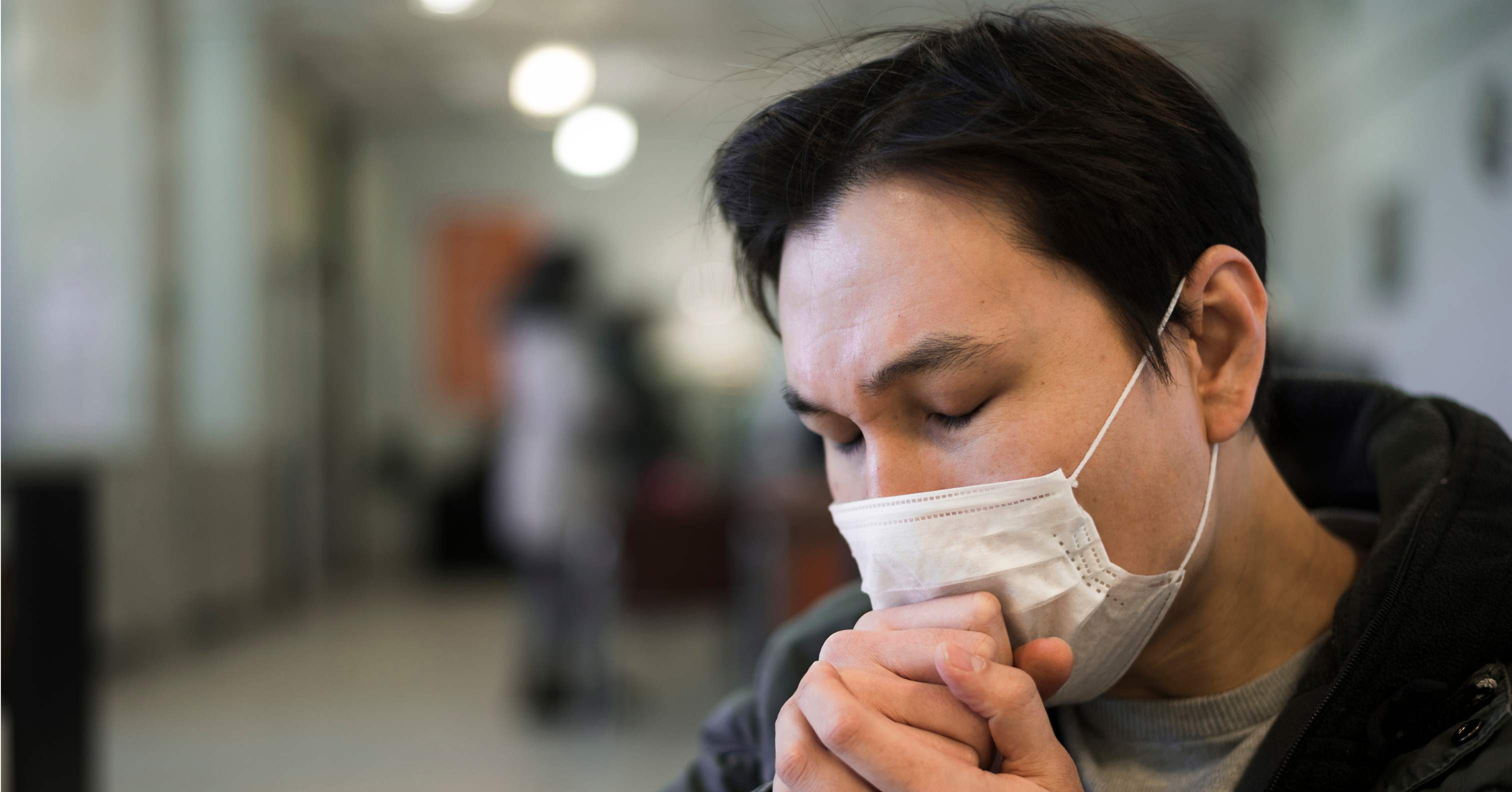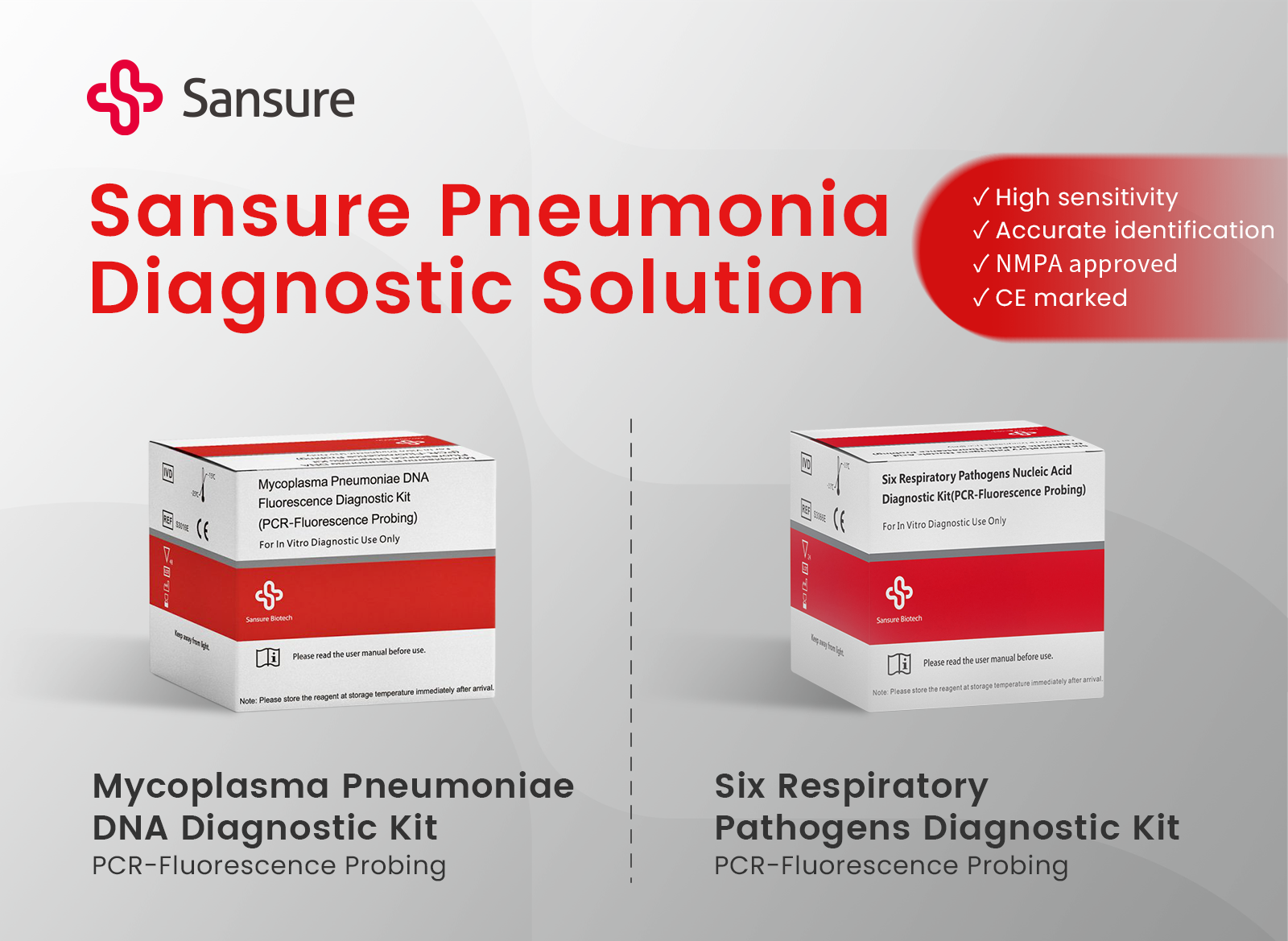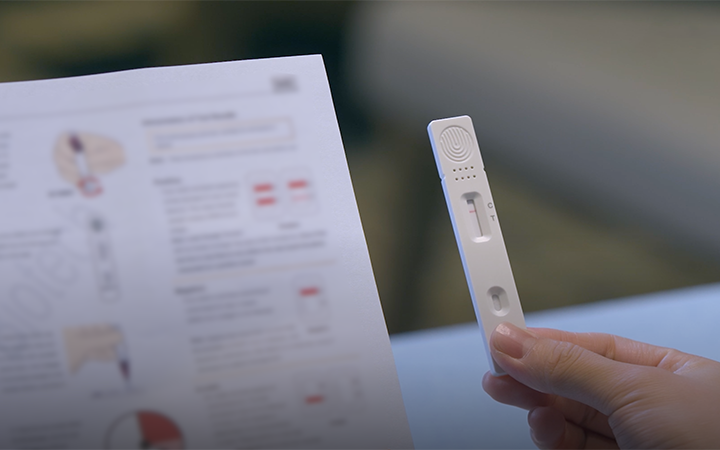The Latest Development of Mycoplasma Pneumoniae Infection: Things You Wanna Know
Mycoplasma pneumoniae infection is a prevalent respiratory disease affecting people worldwide. In 2023, the global scenario of this infection presents compelling facts, shedding light on its widespread nature. On the bright side, advancements in diagnostic methods, such as DNA fluorescence, and cutting-edge testing kits like those provided by Sansure contribute significantly to accurate and timely identification.

Global Prevalence of Mycoplasma pneumoniae Infection
Globally, epidemics of Mycoplasma pneumoniae pneumonia (MPP) materialize at intervals of 3–7 years, accounting for more than 40% of pediatric community-acquired pneumonia (CAP) cases during epidemic years[1]. An estimated 2 million cases of Mycoplasma pneumoniae occur each year in the United States[2], not to mention the many undetected. Therefore, the number can be higher than expected. It is also visible that the outbreak of this year is unprecedented.
- Number of Infections
On Nov. 23rd, 2023, the report Mycoplasma pneumoniae: delayed re-emergence after COVID-19 pandemic restrictions was published in The Lancet. The report illustrated the emerging trend of Mycoplasma pneumoniae infection, whose prospective surveillance data were obtained from 45 sites in 24 countries from the four UN regions: Europe, Asia, the Americas, and Oceania.
According to the report, the last 6 months met a surge in Mycoplasma pneumoniae infection PCR detection tests compared to those previous testing periods in the mentioned regions since the start of the prospective surveillance [M pneumoniae was detected by PCR in 1067 (0·71%) of 149 980 tests during the 6 months] [3].
According to data in Beijing, with the arrival of the school season, the incidence rate saw an increasing trend right after the slight decrease in August. During this epidemic, the positive detection rate (by real-time PCR assay) of M. pneumoniae in outpatient patients can reach 25.4%, inpatients can reach 48.4%, and respiratory patients can reach as high as 61.1%[4].
- Age Distribution
Children and women have a high proportion of M. Pneumoniae infection. The peak age of M. Pneumoniae infection was between 4 and 14 years old[5].
- Seasonal Distribution
Regarding seasonal distribution, April–June and September–November were the peak seasons of M. Pneumoniae infection each year[5].
Causes of Mycoplasma Pneumoniae Infection Outbreak
Several factors contribute to the outbreak of mycoplasma pneumoniae infection. Recognizing these causes is essential for implementing proactive measures to curb its spread.
- Climate Change
Shifts in climate patterns can affect the distribution and behavior of infectious agents like Mycoplasma pneumoniae. Warmer temperatures and altered humidity levels can create environments more favorable for the spread of respiratory infections. Climate change can also influence human behaviors and patterns (like indoor crowding during extreme weather events), indirectly affecting the spread of respiratory diseases.
- Population Density
High population density increases the risk of Mycoplasma pneumoniae infections. In crowded areas, such as urban environments, schools, or public transport, the close proximity of individuals facilitates the airborne spread of this bacterium. Respiratory droplets from an infected person can easily be inhaled by others nearby.
- Unhealthy Lifestyles
Lifestyle factors such as smoking, poor nutrition, and lack of exercise can weaken the respiratory system, making individuals more susceptible to infections like Mycoplasma pneumoniae. Smoking, in particular, damages the respiratory tract’s natural defenses, making it easier for pathogens to invade and cause infections.
- Weakened Immune Systems
Individuals with weakened immune systems, whether due to chronic diseases, stress, age, or other factors, are more vulnerable to infections, including Mycoplasma pneumoniae. It is especially true for most of us who have contracted COVID-19 before. A weakened immune system has a reduced ability to fight off pathogens, leading to a higher risk of infection and potentially more severe illness.
Mycoplasma Pneumoniae Diagnosis Methods
Accurate and timely diagnosis is pivotal in managing mycoplasma pneumoniae infections. Various diagnostic methods play crucial roles in confirming the presence of the pathogen, each offering unique insights into the infection.
- Clinical Diagnosis
Clinical diagnosis remains a primary method for identifying mycoplasma pneumoniae infections. Healthcare professionals assess patients based on a constellation of symptoms, including persistent cough, fever, fatigue, and difficulty breathing. While these symptoms are non-specific and can overlap with other respiratory conditions, a careful examination allows for initial identification. It is essential for individuals experiencing such symptoms, especially in the context of an outbreak, to seek medical attention promptly.
- Laboratory Testing
Testing for Mycoplasma pneumoniae is performed using a laboratory-developed multiplex real-time polymerase chain reaction (PCR) assay that detects both Mycoplasma pneumoniae and Chlamydia pneumoniae. The assay has >98% sensitivity and 100% specificity for the detection of Mycoplasma pneumoniae[6].
Sansure provides Mycoplasma pneumoniae DNA Fluorescence Diagnostic Kit, enabling the specific amplification and identification of mycoplasma pneumonia nucleic acids, and Six Respiratory Pathogens Nucleic Acid Diagnostic Kit, to identify the various respiratory tract pathogens for more accurate treatment.

- Radiology
Radiological imaging is supplementary in mycoplasma pneumoniae diagnosis, providing valuable information about the extent and severity of lung involvement. Chest X-rays may reveal patchy infiltrates and areas of consolidation, characteristic of mycoplasma pneumoniae infections.
While radiology aids in assessing the impact on the respiratory system, it is not a standalone diagnostic method. Combining clinical findings, laboratory testing, and radiological assessments enhances the accuracy of mycoplasma pneumoniae diagnosis, allowing healthcare professionals to tailor treatment plans to individual patient needs.
A multi-faceted approach to mycoplasma pneumoniae diagnosis, encompassing clinical assessment, advanced laboratory testing with Sansure kits, and radiological evaluation, ensures a comprehensive understanding of the infection. The integration of these methods enables healthcare providers to deliver timely and targeted interventions, ultimately improving patient outcomes and contributing to the effective management of mycoplasma pneumoniae infections.
Prevention Methods for Mycoplasma Pneumoniae Infection
Preventing the spread of mycoplasma pneumoniae infection involves adopting a multi-faceted approach. This section outlines practical preventive measures that individuals can incorporate into their daily lives.
1. Personal Hygiene:
Emphasizing the importance of personal hygiene, such as handwashing and respiratory etiquette, helps reduce the risk of mycoplasma pneumoniae transmission.
2. Physical Exercise:
Maintaining a regular exercise routine contributes to overall health and strengthens the immune system.
3. Balanced Diet:
A balanced diet rich in essential nutrients supports a healthy immune system. Providing dietary recommendations for bolstering immunity is crucial for preventing mycoplasma pneumoniae infection.
4. Avoiding Crowds:
Crowded places facilitate the rapid spread of respiratory infections. Advising individuals to avoid crowded environments, especially during outbreaks, is a key preventive measure.
Conclusion
Mycoplasma pneumoniae infection remains a significant global health concern in 2023. Understanding its prevalence, causes of outbreaks, effective diagnosis methods, and preventive measures is essential for mitigating its impact on individuals and communities.

The advancements in diagnostic technology, particularly the Sansure testing kits, contribute to a more accurate and efficient identification of the infection, paving the way for improved management and control strategies. As we navigate the challenges posed by respiratory infections, a comprehensive and informed approach is crucial to safeguarding public health.
Reference





